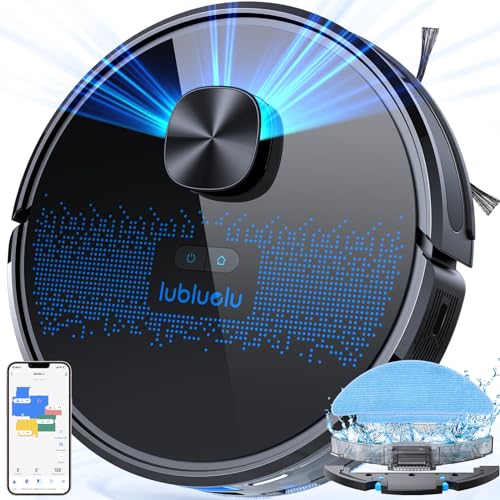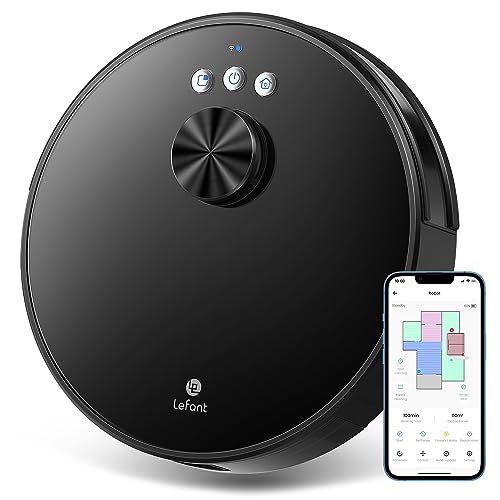It's Time To Upgrade Your Robot Vacuum Cleaner Lidar Options
페이지 정보

본문
 Robot Vacuum Cleaner Lidar Navigation
Robot Vacuum Cleaner Lidar NavigationLidar has revolutionized robotic vacuum cleaners. It provides accuracy, efficiency, and adaptability previously unattainable. Learn more about how the technology works.
Navigation is a massive factor that determines prices, so the more advanced the mapping system, the more premium the bot. There are budget options that provide excellent navigation or super-efficient, self-emptying models with top-of-the-line obstacle avoidance.
Light Detection and Ranging
In the world of rapidly evolving smart home technology, the integration of lidar mapping has been one of the most innovative developments in robot vacuums. This technology is advanced and allows automated cleaners to navigate and map rooms with incredible precision, accuracy and scalability.
Lidar is a technology for remote sensing that uses laser beams to measure distances. It operates by emitting an laser beam that bounces off of objects within the room. It then determines the time taken for the beam to return, and then creates a real-time accurate map of the area. This enables the robot to dodge obstacles with a high degree of precision and to plan its route through the room in a systematic manner making sure that each corner of the space is meticulously cleaned.
This type of technology is far more advanced than the gyroscope-based navigation systems that were employed in previous generations of robot vacuums. Gyroscope-based systems work well at keeping robots from colliding with things and can create basic maps of rooms, but they are vulnerable to limitations, for example being unable to detect small obstacles like cables and wires.
With the advanced navigation capabilities of lidar, robotic vacuums are much less likely to be stuck on furniture or other items and are able to avoid running over cords that would otherwise impede their progress. They are able to clean more efficiently and effectively, and require less "babysitting".
Some robot vacuums scan their environment using cameras, but they aren't as precise or flexible as those that utilize lidar. Camera-based technology can be susceptible to error, for example, when a robot vacuum obstacle avoidance lidar; Continuing, interprets a reflection as an obstacle. It may also be difficult for the robot to differentiate between objects of different textures and colors.
The best robot vacuums equipped with lidar use a spinning, hidden laser that is tucked beneath a cap on the top of the device. The laser emits laser beams which reflect off surfaces and walls. The laser beams to create an image of the area, allowing it to see things it would miss using traditional navigation technology. This mapping capability makes this robot a great choice for homes with multiple floors, as it is able to efficiently move from room to room. The ECOVACS HOME application lets users set virtual boundaries on the interactive map to prevent the robot from entering certain parts of the house.
Obstacle Detection
Lidar-enabled devices can map rooms precisely and safely, unlike simple robot vacuums that use bump sensors. The technology combines visual information from cameras and laser-based data from Lidar and other sensors to provide precise measurements and locations of walls, objects furniture and other obstacles in the room. This data is used to localize and plan the robot's path, allowing it to navigate efficiently and with precision.
The robot can also avoid collisions by detecting small objects like socks cables, shoes and pet waste, and other such items. If it comes across an object it hasn't previously identified the vacuum will normally stop or change its route. The object recognition system utilizes the built-in camera to identify objects. The sensor also calculates the dimensions and distance of the object to determine if it will cause a collision.
The majority of robotic cleaners are equipped with obstacle sensors that stop the machines from hitting objects and damaging them. They are typically placed on the front of the device and emit an ultrasonic noise that reflects off the object to detect it. The sensors can be synchronized to form an entire field of protection in the direction they travel without interfering.
Some of the most sophisticated robots have wall sensors to prevent them from pinging on furniture and walls. They can also identify the corners of a room and then move around them without making much noise.
A robot that has Lidar navigation will have a much better chance of avoiding obstacles and this will result in more effective and reliable clean. Lidar technology is also more precise than older sensors and is able to work in darkness which makes it ideal for smart home applications. These features might not be standard on all models, but they're important if you want an item that is reliable and provides peace of mind.
Mapping
Lidar mapping allows robots to make an precise map of the area that is cleaned in real time. This map allows the device to perform precise navigation and obstacle avoidance, while improving its ability to follow optimized cleaning paths, making it more practical for a variety of living spaces. It can also help the robot better manage its battery as it can complete an entire cleaning session without running out of power.
This is a major improvement over the previous technology, which often required the robot to continually shift its direction in the face of obstacles or changing room layouts. In addition, cheapest lidar robot vacuum technology is more accurate and reliable than camera-based systems which are susceptible to limitations like changes in lighting conditions or reflective surfaces.
The system is operated by sending laser pulses through the floor and observing the time it takes for them to bounce off objects. The device then uses this information to calculate distances and create a virtual map. The system can also distinguish between solid and transparent objects, allowing it to detect furniture, light fixtures, and other household items.
In addition to its ability to map, lidar technology allows the robot vacuum with lidar to determine the position of dirt and debris on the floor. This is a major advantage over older technology, which relies on sensors to determine when the vacuum has gotten to an object like a rug or piece of furniture. With this information, the robot can more effectively navigate around obstacles and effectively clean the entire area.
Lidar is a technology that has transformed robots from simple automated cleaners into intelligent and adaptive housemates. The precision as well as the accuracy and flexibility it offers make it the ideal option for robotic vacuums. Its advanced capabilities make it more costly than other navigation systems, such as cameras and Gyroscopes.
As technology advances, it is possible that new navigational systems are more affordable and affordable for the typical consumer. The majority of robots utilize a combination of sensors to avoid obstacles and navigate. Some make use of 3D structured light sensor navigation, whereas others employ a variety of binocular or monocular technology for obstacle avoidance based on vision.
Navigation
The majority of robot vacuums utilize sensors to navigate around your home. Basic models make use of a variety of ultrasonic, optical and infrared sensors, while advanced models include Lidar navigation.
Lidar was originally designed for the aerospace industry, is an advanced sensing system that uses lasers to measure distances in real time and create maps of your surroundings. When it is applied to robot vacuum cleaners, it enhances navigation capabilities and enhances overall performance. As opposed to cameras, which are confined by their angle of view and can't see below furniture or in tight corners, Lidar allows you to set virtual boundaries for your robot and ensure it isn't able to access areas that are not allowed, like wires and cables.
It's more accurate to utilize mapping technology than ultrasonic or infrared sensors in the robot vacuum. With its ability to detect objects with millimeter accuracy lidar-equipped robots can move more easily in logical ways and navigate complex environments without a hitch. It is also able to avoid obstacles with precision and guarantee a thorough cleaning.
In addition to improving navigation, the mapping capabilities of robot vacuums is helpful in making plans for its cleaning path. This is particularly useful for homes with several floors. By using the information contained in its map, a robot with lidar can calculate its position on the floor and determine which part of the floor it should clean first. It will then follow an efficient path and clean your home more thoroughly.
The majority of the top robot vacuums that can map use vSLAM (visual simultaneous localisation and mapping) and Lidar to create the most precise maps possible. With this, the robot is able to detect objects, like those under furniture, and even detect a door that is closed. It also avoids collisions and will know when to return to the base to recharge.
A robot equipped with mapping could help you save money, as well as enhance navigation. It lets you plan the most efficient time to clean your home. Depending on the type of vacuum you have, it may be able to automate the start of cleaning at certain times of the day or even at night, which is an enormous benefit for busy families.

- 이전글17 Signs You Work With Black Friday Robot Vacuum Deals 24.06.10
- 다음글The 10 Most Terrifying Things About Gotogel Link Alternatif 24.06.10
댓글목록
등록된 댓글이 없습니다.
